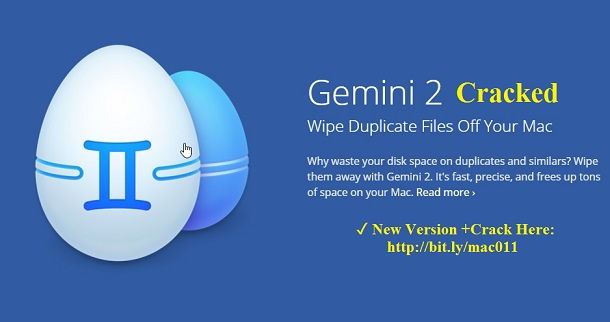
Service Manual Controller SIGMA CONTROL 2 No.: 99450 00 USE SCREW FLUID 1.0.x.x /KKW/SSC 2.00 en 01 BA-SIGMA CONTROL-01 /KKW/SSC 2.0128 155040 Quick user guide Controller SIGMA CONTROL 2 99450 00 USE SCREW FLUID 1.0.x.x Contents 1. Apr 26, 2018 SigPro 2.1.3 – Adds features to Mail.app signatures feature. April 26, 2018 SigPro (formerly known as SignatureProfiler) is a simple and intuitive plugin for Apple’s Mail application that makes it easier for your tosigpro handle and gain more control over your signatures. April 26, 2018,EMail,MacOs Apps,SigPro,Utilities. Sigpro213kg SigPro 2.1.3 Mac OS X 6.75 MB. SigPro is a complement to the Apple Mail application that adds missing features of the way they are managed and administered with your outgoing mail, especially SigPro 2.1.2. January 24, 2018,EMail,MacOs Apps,SigPro. SigPro 2.0.1 – Dynamic signatures for your messages. October 9, 2016 SigPro (formerly known as SignatureProfiler) is a simple and intuitive plugin for Apple’s Mail application that makes it easier for your tosigpro handle and gain more control over your signatures. The binary 9/7 filters are 1 0 -8 16 46 16 -8 0 1/64 and -1 0 9 16 9 0 -1/32. The Le Gall 5/3 analysis filters -1 2 6 2 -1/8 and -1 2 -1/3 Usage: Binlets are especially useful for finite arithmetic reversible transforms, especially for lossless compression: See also.
OS X v10.5.1 and later include an application firewall you can use to control connections on a per-application basis (rather than a per-port basis). This makes it easier to gain the benefits of firewall protection, and helps prevent undesirable apps from taking control of network ports open for legitimate apps.

Configuring the application firewall in OS X v10.6 and later
Use these steps to enable the application firewall:
- Choose System Preferences from the Apple menu.
- Click Security or Security & Privacy.
- Click the Firewall tab.
- Unlock the pane by clicking the lock in the lower-left corner and enter the administrator username and password.
- Click 'Turn On Firewall' or 'Start' to enable the firewall.
- Click Advanced to customize the firewall configuration.
Configuring the Application Firewall in Mac OS X v10.5
Make sure you have updated to Mac OS X v10.5.1 or later. Then, use these steps to enable the application firewall:
- Choose System Preferences from the Apple menu.
- Click Security.
- Click the Firewall tab.
- Choose what mode you would like the firewall to use.
Advanced settings
Block all incoming connections
Selecting the option to 'Block all incoming connections' prevents all sharing services, such as File Sharing and Screen Sharing from receiving incoming connections. The system services that are still allowed to receive incoming connections are:
- configd, which implements DHCP and other network configuration services
- mDNSResponder, which implements Bonjour
- racoon, which implements IPSec
To use sharing services, make sure 'Block all incoming connections' is deselected.
Allowing specific applications
To allow a specific app to receive incoming connections, add it using Firewall Options:
- Open System Preferences.
- Click the Security or Security & Privacy icon.
- Select the Firewall tab.
- Click the lock icon in the preference pane, then enter an administrator name and password.
- Click the Firewall Options button
- Click the Add Application (+) button.
- Select the app you want to allow incoming connection privileges for.
- Click Add.
- Click OK.
You can also remove any apps listed here that you no longer want to allow by clicking the Remove App (-) button.
Automatically allow signed software to receive incoming connections
Applications that are signed by a valid certificate authority are automatically added to the list of allowed apps, rather than prompting the user to authorize them. Apps included in OS X are signed by Apple and are allowed to receive incoming connections when this setting is enabled. For example, since iTunes is already signed by Apple, it is automatically allowed to receive incoming connections through the firewall.
If you run an unsigned app that is not listed in the firewall list, a dialog appears with options to Allow or Deny connections for the app. If you choose Allow, OS X signs the application and automatically adds it to the firewall list. If you choose Deny, OS X adds it to the list but denies incoming connections intended for this app.
If you want to deny a digitally signed application, you should first add it to the list and then explicitly deny it.
Some apps check their own integrity when they are opened without using code signing. If the firewall recognizes such an app it doesn't sign it. Instead, it the 'Allow or Deny' dialog appears every time the app is opened. This can be avoided by upgrading to a version of the app that is signed by its developer.
Enable stealth mode
Enabling stealth mode prevents the computer from responding to probing requests. The computer still answers incoming requests for authorized apps. Unexpected requests, such as ICMP (ping) are ignored.
Firewall limitations

The application firewall is designed to work with Internet protocols most commonly used by applications – TCP and UDP. Firewall settings do not affect AppleTalk connections. The firewall may be set to block incoming ICMP 'pings' by enabling Stealth Mode in Advanced Settings. Earlier ipfw technology is still accessible from the command line (in Terminal) and the application firewall does not overrule any rules set using ipfw. If ipfw blocks an incoming packet, the application firewall does not process it.

Sig Pro 2.1.3 For Macos Pc
Sigpro213[kg]
SigPro is a complement to the Apple Mail application that adds missing features of the way they are managed and administered with your outgoing mail, especially if you have multiple e-mail accounts (and who is not these days). Originally it was written to compensate for the total lack of management firms in the 1.x versions of the program, but even still lacks some capabilities. 2.x if you use several different accounts and want to share firms between accounts.
SigPro is a complement to the Apple Mail application that adds missing features of the way they are managed and administered with your outgoing mail, especially if you have multiple e – mail accounts (and who is not these days). Originally it was written to compensate for the total lack of management firms in the 1.x versions of the program, but even still lacks some capabilities. 2.x if you use several different accounts and want to share firms between accounts.
Easy control firm
SigPro gives you the ability to create a signature and use it for all accounts, even if you have specific account information, such as your email address. The elements that can be added generally include email address, user name and account name.
Insert content of a script
with SigPro, you can insert any text you want in your signature calling a script at the time the message is created. The possibilities are endless using this capability!
Include random quotes
If you want to witty quote in your emails, you can compile a list of them in a text file and SigPro inserted one at random in each new message.
It shows what you’re listening
If you like to show the world what you’re listening to while working, You have covered, allowing you to show what is currently happening on iTunes. You can even customize the output depending on whether the music is playing, stopping or stopping.
Special content for each account or alias
Each of your email accounts and even aliases account can have personalized content separately. So long section can add this disclaimer to your work account, while giving a look and a different feel to your other alias. The image on the left shows two different signatures for each alias to an account.
Sigpro 2.1.3 For Macos Operating System

Sig Pro 2.1.3 For Macos Download
Easily set signature content
With SigPro, it is easy to establish the content of their signatures on complex models. If you have a website you want to become a signature, you can simply enter the address or open the html file and insert the contents. You can add links and images that are on the web as well.